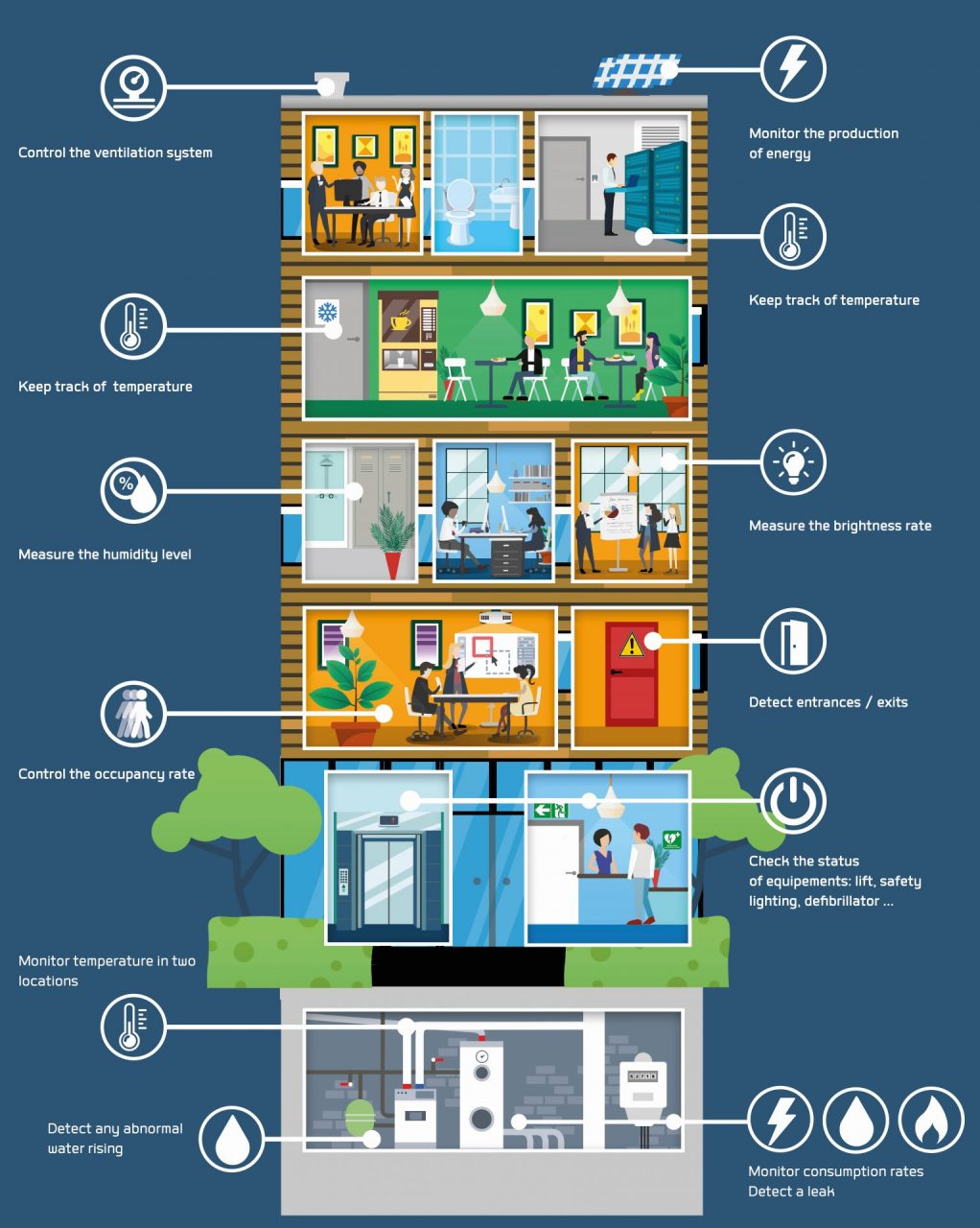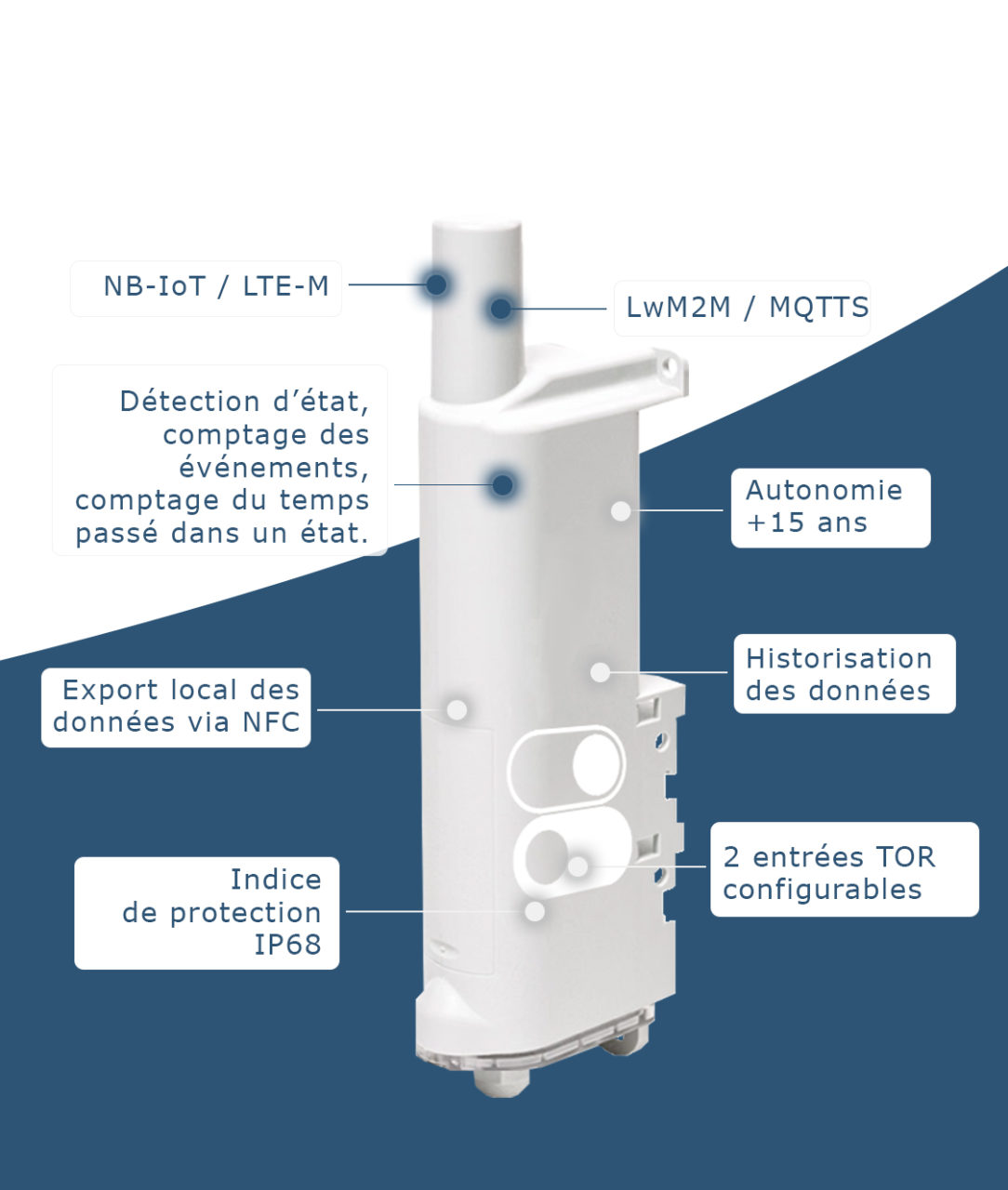In the current context, many buildings are being forced to close or reduce their activity. However, despite the total or partial absence of occupants, a building continues to live. Yet, in an empty building, how can we ensure that there is no abnormal energy consumption? That the installations that are supposed to operate autonomously are still active? How can we avoid unnecessary journeys to check that they are working properly? Or even to record mandatory data on equipment’s, when travel is not recommended?
The IoT solutions, quick to implement and easy to use, serve for a wide range of building monitoring applications. The manager can therefore remotely know the evolution of the building’s life data. He can also monitor the evolution of his sensors, thanks to the maintenance tools in operational conditions (MCO). Whether managing his buildings or his sensors, there is no need to move around anymore. In just one click, the manager knows the status of his sensor fleet. He can also easily adapt their configuration to changes in building occupancy.
Monitoring the operation of a building from a distance with IoT
An empty or little-used building is logically expected to consume much less energy than during normal periods of activity. But how to follow easily the evolution of these consumptions? Adeunis’ IoT sensors are the perfect answer to this need. Once connected to gas, water or electricity meters, they regularly report consumption data.
During the first lockdown, thanks to Adeunis solutions, some municipalities became aware of abnormal activities in closed buildings. They were then able to act quickly on the buildings concerned to fix the situation.
Frank Fischer, CEO of Adeunis
IoT Adeunis solutions also enable the detection of a malfunction on an equipment: shutdown of a ventilation system, malfunctioning of a cold room, power failure, presence of water on the floor, etc.
A ventilation system that stops working is a guarantee of damage to the building. A cold room in which the temperatures are no longer the right ones, it is the insurance of a considerable loss of goods. In the same way, a power cut can lead to the shutdown of installations that are essential to the building’s activity. In these unoccupied buildings, any malfunction would not be detected for several days or even weeks, with significant consequences for the building itself or the installations present. A warning system informs building managers in real time so that they can act as quickly as possible.
Avoid travel thanks to IoT
The maintenance of the building’s equipment requires regular visits by technical teams to check that it is in good condition. With the IoT, it is possible to compensate for these visits with malfunction alerts.
In the same way, on certain equipment’s, it is necessary to regularly read the operating data. This is compulsory for refrigeration systems or hot water networks (in ERPs: establishments receiving public). In these two examples, the IoT sensors record temperature data remotely.
There is no need to move around at a time when travel can be problematic. For example, the EHPADs are part of the establishments where temperature readings on the DHW networks are mandatory. In these times of health crisis, technicians’ movements are more than sensitive and must be limited by remote temperature readings that guarantee the safety of all.
With these IoT solutions, trips for preventive maintenance or mandatory data collection can disappear.
IoT for multiple benefits
These IoT solutions make it possible to answer easily and quickly for growing digitalization needs in remote monitoring. The beneficial effects by using these solutions, in times of health crisis or not, are multiple:
- reduction of operating and maintenance costs by eliminating the need to travel,
- gain in reactivity to avoid, in particular, excessive damage to buildings,
- saving time and optimising the organisation of operating services,
- ensuring compliance with regulatory obligations,
- detection of over-consumption and monitoring of energy expenditure.
14/01/2021
20 years
expertise to support you, from the diagnosis to the implementation of your solution



